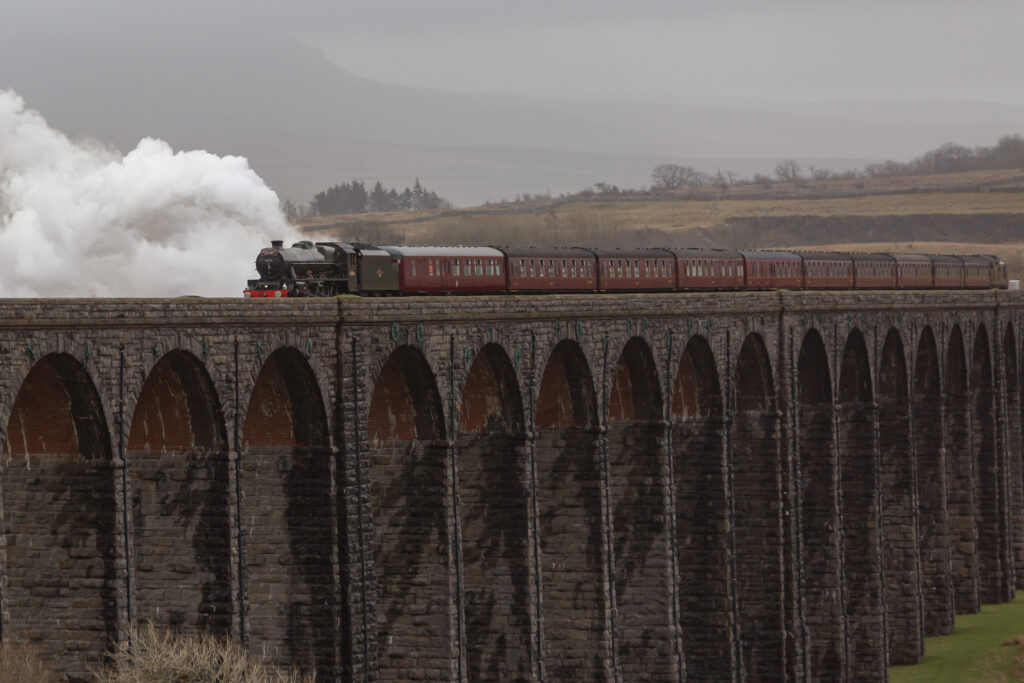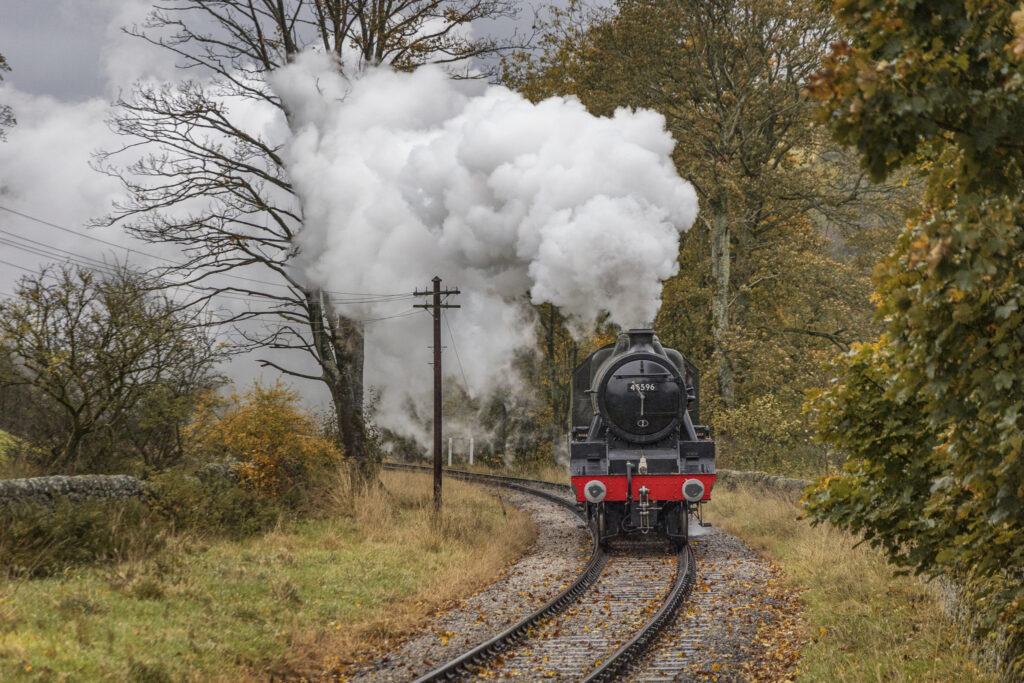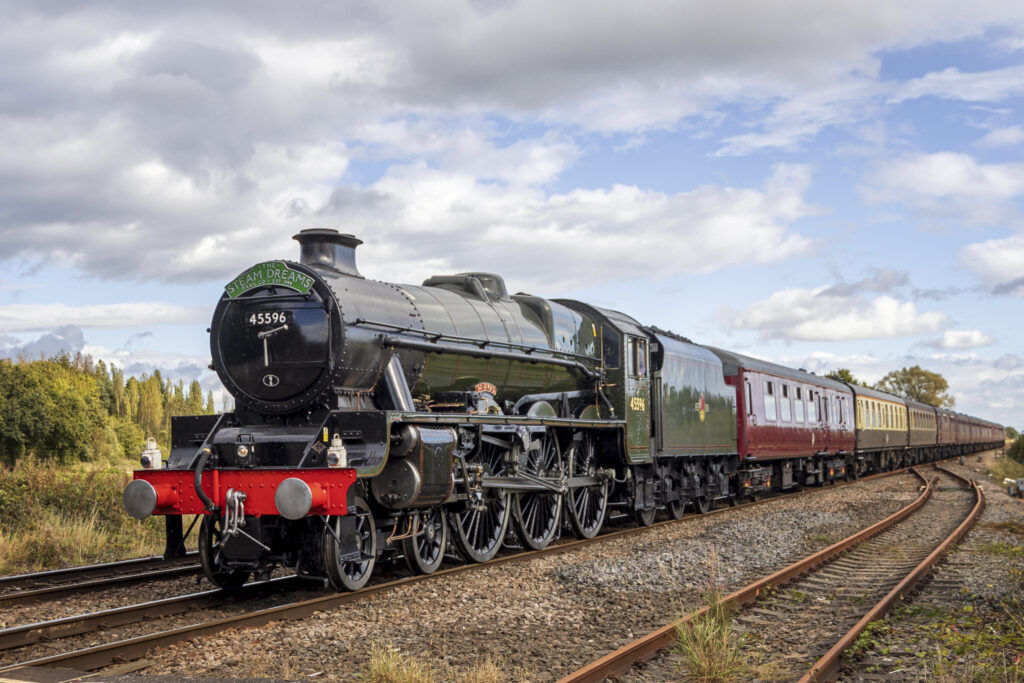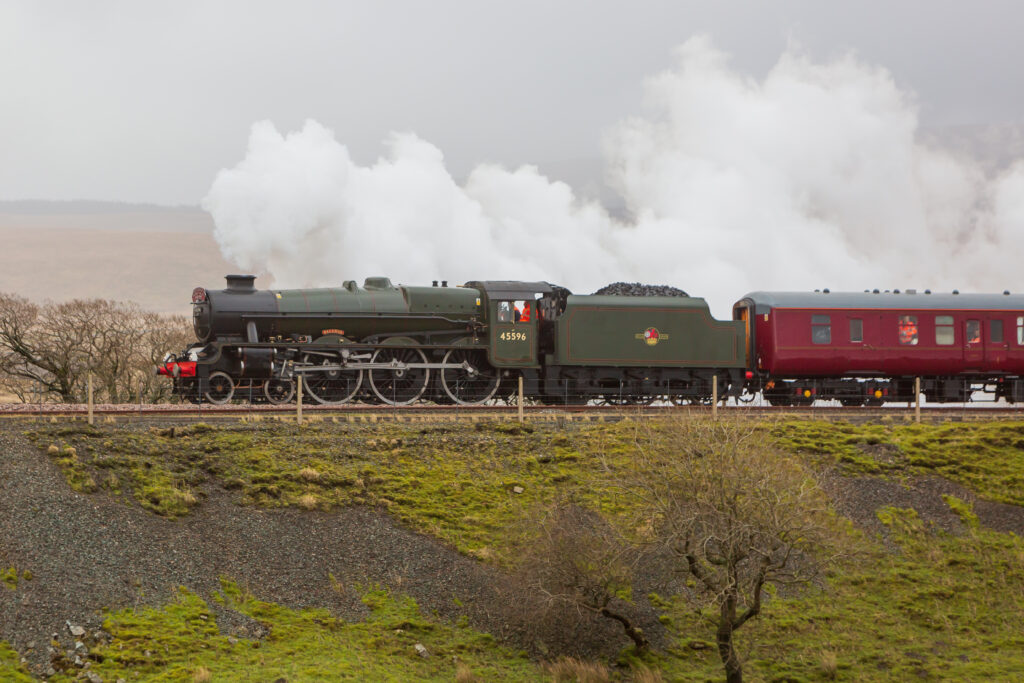45596 LMS Jubilee Class ‘Bahamas’

Constructed in December 1934, this engine was one of 50 engines built at the North British Locomotive Co in Glasgow for the London Midland & Scottish Railway. Carrying engine No.5596, it was one of a class of‘Jubilee’express locomotives, which eventually totalled 191, others being constructed at Crewe and Derby. The engine received the name Bahamas in 1936.
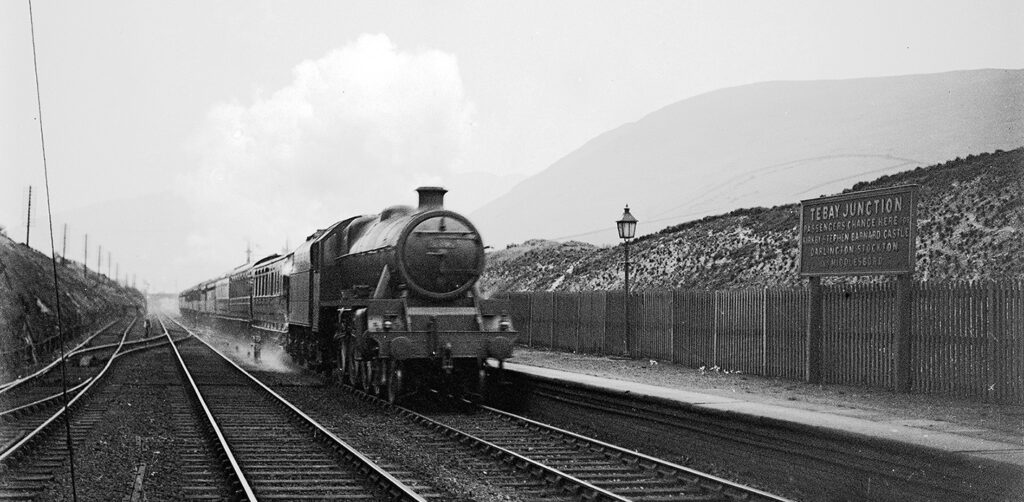
On entering service in January 1935, the engine was put to work on the west coast main line routes, for which it was subsequently based at Crewe, Preston, Camden and Willesden. It moved to work over the midland routes from depots at Kentish Town and Derby, and, following the outbreak of the Second World War, it was at Sheffield and Bristol. The engine was back at Crewe by 1947 and, as BR No.45596, would see operation from Liverpool and Carlisle before it was transferred to Stockport Edgeley. It was here that 45596 was withdrawn from service in 1966, where a group of enthusiasts organised an appeal to save it from the scrapyard, restore it to its former LMS identity, and operate it on the national rail network.
Following protracted negotiations, the engine was purchased in 1967 by the Stockport (Bahamas) Locomotive Society and sent to the Hunslet Engine Co. in Leeds for repair and a repaint into its former LMS livery. In recognition of the wider interests of the group, the Society stopped using the ‘Stockport’ prefix.
The engine, now operational and once more No.5596, was used for providing rides on the engine’s footplate for visitors to the Society’s first home, the Dinting Railway Centre in Derbyshire. In 1972 5596 was chosen as the first steam locomotive to work on designated routes over the national rail network, following a ‘Return to Steam’ campaign by the Association of Railway Preservation Societies.
Boiler repairs became necessary in 1973, and the Bahamas became a static exhibit at Dinting.
Work on the other locomotives in the Society’s collection prevented the start of the overhaul of Bahamas until 1980. It was to be a further eight years before the work was completed at approximately £16,000, all achieved by the Society volunteers, and with an effective saving of around £50,000 compared to similar work undertaken elsewhere by contract firms at that time.
Now restored to its authentic British Railways condition, Bahamas successfully operated 37 railtours on the main line between 1989 and 1994, covering more than 12,000 miles before its certification expired. The engine was praised by enthusiasts and professional railwaymen and earned itself an enviable reputation for its excellent reliability and performance.
Then followed, visits to various heritage railways until the expiry of its boiler certificate in 1997, which resulted in its withdrawal from operation pending major boiler repairs.
With the closure of the Dinting Railway Centre in 1990, the move to Ingrow on the Keighley & Worth Valley Railway and the creation of a new home at Ingrow on the Keighley & Worth Valley Railway, the engine was placed on public exhibition in the KWVR’s museum at Oxenhope while other projects were taken on. Here it stayed until 2012 when the Bahamas attended the ‘Railfest’ event at the National Railway Museum in York, the visit being extended until the following year before it returned to Ingrow.
In 2012 an application was submitted to the Heritage Lottery Fund for the overhaul of Bahamas to working order and to utilise the project to create educational resources based at the Society’s museum at Ingrow. The bid was successful, and the engine was moved to the Tyseley Locomotive Works near Birmingham for a major repair to the boiler and chassis. The locomotive’s tender and some engine components remained at Ingrow to enable volunteers to retain and improve their skills ready for when the necessary maintenance of the engine would be required following its completion. All the components came together at Tyseley in 2018, and Bahamas could steam again in September since it has been utilised on excursions over the national rail network from London and the Settle & Carlisle route as appearing on heritage railways.
The double chimney
The feature that makes Bahamas unique amongst the other surviving engines of the class is the double chimney. Although used on other types of steam locomotives (and even other members of the class in the 1930s/40s), the design of the double chimney exhaust arrangement fitted to Bahamas was based on the design criteria evolved at Swindon in the mid-1950s. The concept was to improve overall performance and overcome the indifferent steaming that was becoming apparent because of the poor quality coal then common in the post-war era. The design of the exhaust system for the ‘Jubilees’ had been trialled at the Rugby Testing Station during 1956/57. Still, it was not until May 1961 that Bahamas became the first and only member of the class to receive the equipment, which was fitted during an overhaul at Crewe works. This experiment proved to be the last attempt by British Railways to specifically improve the steaming capabilities of its fleet of steam locomotives.
The intention was to trial-fit five ‘Jubilees’ with this modification to see how they performed under day-to-day service. However, all experiments on steam locomotives were halted during the following year.
The tests at Rugby had proved that the boiler could produce 30 per cent more steam than previous using good quality coal, and using that of lesser quality would still have been able to meet the requirements of the operating department.
In today’s environment, experience has shown that the modification does all that the locomotive engineers of the 1950s intended, for the engine has given some remarkable performances and proved capable of coping with all types of coal and firing techniques.
Would you like to no more? Then why not consider buying our book Bahamas – the story of a steam locomotive. All proceeds from its sale go towards the upkeep of the locomotive. Follow the link HERE.


